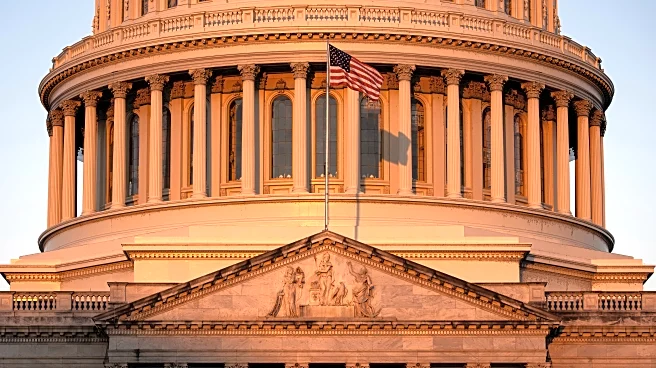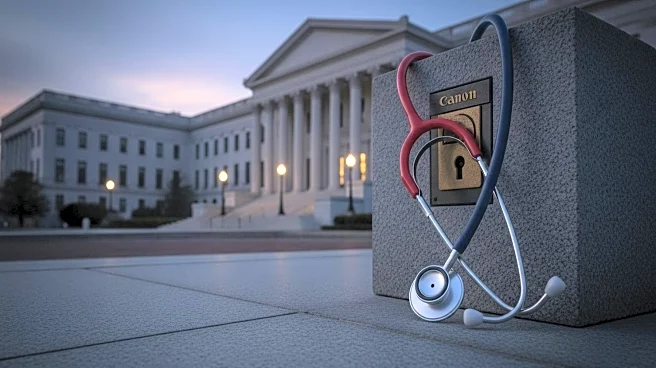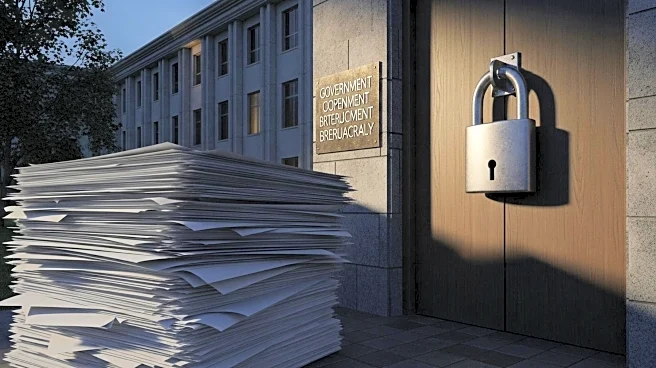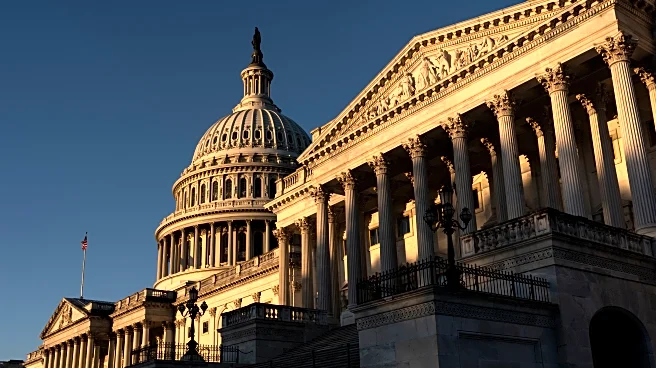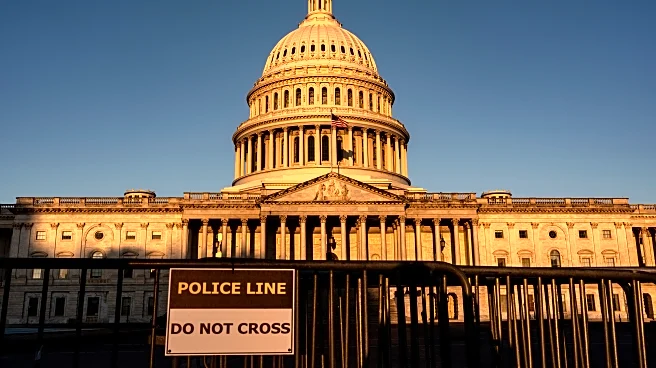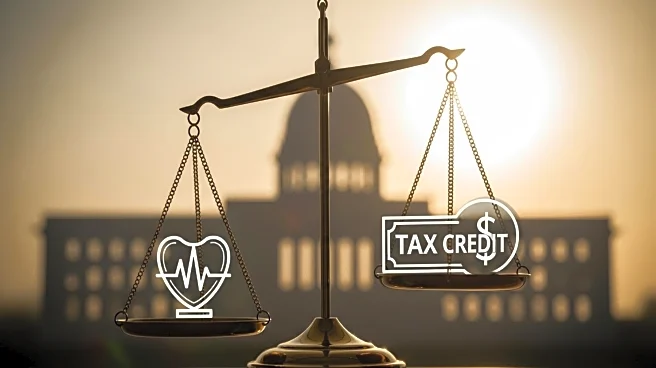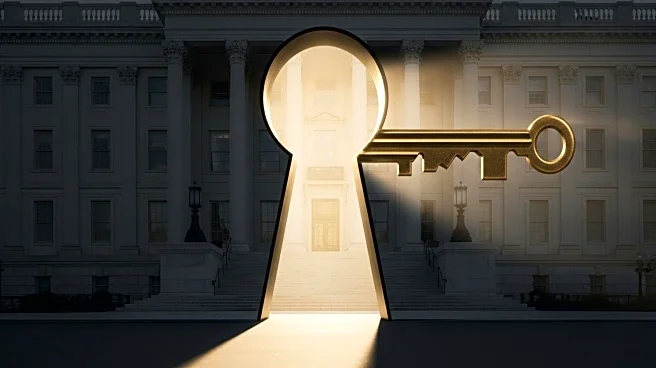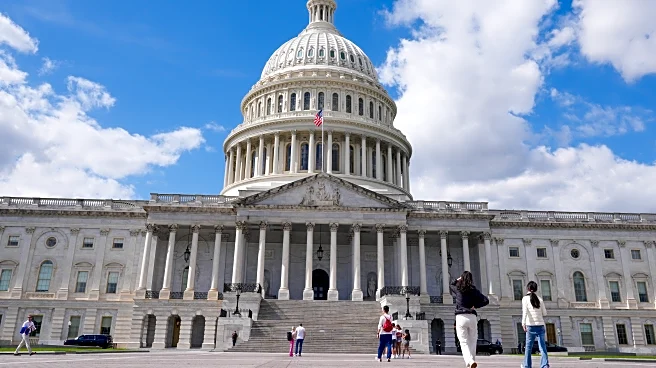What is the story about?
What's Happening?
The ongoing government shutdown is partly due to Democrats' insistence on maintaining COVID-era Obamacare premium tax credits, which they believe will lower healthcare costs. However, these credits are costly and do not address the fundamental drivers of premium increases, such as soaring medical-care costs, healthcare worker shortages, and pharmaceutical tariffs. Insurers project individual-market premiums will rise by 18% in 2026, with medical-cost pressures and tariffs being significant contributors. Critics argue that subsidies mask the real cost of coverage and do not incentivize insurers to offer better value.
Why It's Important?
The Democrats' strategy to extend premium tax credits is seen as a temporary fix that fails to tackle the root causes of rising healthcare costs. The approach could lead to increased government spending without effectively reducing premiums. The focus on subsidies rather than structural reforms may result in higher deficits and continued pressure on taxpayers. Addressing the underlying issues, such as modernizing scope-of-practice rules and removing tariffs, could provide more sustainable solutions for managing healthcare expenses.
What's Next?
Congress may need to reconsider its approach to healthcare reform, focusing on transparent, cost-effective measures rather than expanding subsidies. Potential reforms include improving price transparency, expanding access to affordable alternatives, and restoring program integrity. The outcome of the shutdown negotiations will influence future healthcare policy and spending priorities.
Beyond the Headlines
The debate over healthcare costs highlights the need for comprehensive reform that addresses systemic issues rather than relying on subsidies. The political and economic implications of the shutdown could affect public trust in government and healthcare systems.
AI Generated Content
Do you find this article useful?


